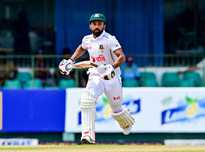The International Space Station (ISS) has officially welcomed its first Indian astronaut, Shubhanshu Shukla, amid enthusiastic greetings.

The Dragon series' fifth spacecraft, Grace, achieved a successful soft docking with the ISS at 16.01 IST on Thursday, soaring over the North Atlantic Ocean.
Shukla's journey marks a significant milestone, making him only the second Indian to venture into space, nearly four decades after Rakesh Sharma's pioneering flight in 1984. He is joined on the Axiom-4 mission by Slawosz Uznanski-Wisniewski, representing Poland's return to space since 1978, and Tibor Kapu, the first Hungarian astronaut in 45 years. The crew's journey commenced on Wednesday from Nasa's Kennedy Space Center.
What lies ahead for India's space program?
India's space capabilities have been demonstrated through successful missions, including deploying an orbiter around Mars and achieving a soft landing of a robotic spacecraft near the Moon's south pole.
Shukla's experiments aboard the Axiom-4 mission are strategically designed to bolster the Gaganyaan program. His research delves into the effects of microgravity on critical areas such as plant growth, muscle atrophy, mental well-being, and microbial behavior. These are crucial for ensuring the sustainability of long-term human spaceflights. Furthermore, he is examining tardigrades to gain insights into survival mechanisms under extreme conditions. The overarching goal is to develop sustainable space food systems, prioritize astronaut health, and reinforce life support strategies for upcoming Indian space missions.
The Nasa-Isro NISAR mission is set to revolutionize Earth observation with its advanced radar technology, enabling continuous, all-weather imaging capabilities. This will facilitate more reliable and consistent monitoring of natural disasters, environmental changes, and agricultural trends.
NISAR's global applications hold the potential to transform the work of scientists, farmers, and disaster response teams worldwide.
Newer articles
 Vijay Officially Named TVK's Chief Minister Hopeful for Tamil Nadu's 2026 Election
Vijay Officially Named TVK's Chief Minister Hopeful for Tamil Nadu's 2026 Election
 RJ Mahvash Prioritizes Work Over Buzz, Addresses Link-Up Speculation
RJ Mahvash Prioritizes Work Over Buzz, Addresses Link-Up Speculation
 UNESCO's World Heritage Wonders: Unveiling 10 Iconic Sites, From Petra to the Pyramids
UNESCO's World Heritage Wonders: Unveiling 10 Iconic Sites, From Petra to the Pyramids
 JPG to PDF: A Comprehensive Guide for Graphic Designers & Professionals
JPG to PDF: A Comprehensive Guide for Graphic Designers & Professionals
 iQoo Z9 Turbo: Rumored Specs Emerge – Snapdragon 8s Gen 3, 6000mAh Battery Highlighted
iQoo Z9 Turbo: Rumored Specs Emerge – Snapdragon 8s Gen 3, 6000mAh Battery Highlighted
 Shadman Islam Defends Bangladesh Batters After Day 1 Struggles Against Sri Lanka
Shadman Islam Defends Bangladesh Batters After Day 1 Struggles Against Sri Lanka
 England's Bold Claim: Could They Have Chased Down 450 Against India?
England's Bold Claim: Could They Have Chased Down 450 Against India?
 5 Often-Missed Warning Signs of Bladder Cancer You Need to Know
5 Often-Missed Warning Signs of Bladder Cancer You Need to Know
 KL Rahul Puts Country First, Prioritizes England Tests Over Newborn Child
KL Rahul Puts Country First, Prioritizes England Tests Over Newborn Child
 Tick Bite Paralyzes Fitness Influencer: A Wake-Up Call for Outdoor Enthusiasts
Tick Bite Paralyzes Fitness Influencer: A Wake-Up Call for Outdoor Enthusiasts